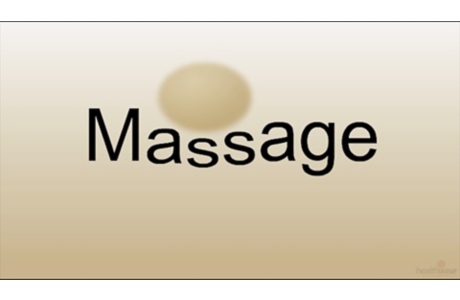Massage Therapy
Topic Overview
What is massage?
Massage is rubbing the soft tissues of the body, such as the muscles. Massage may be helpful in reducing tension and pain, improving blood flow, and encouraging relaxation. Massage therapists usually apply pressure with their hands, but they can also use their forearms, elbows, or feet. There are at least 80 different types of massage. Some are gentle, and some are very active and intense.
For example, Swedish massage is very gentle and is often used to promote relaxation, improve blood flow, and relieve muscle tension. The therapist uses long, gliding strokes and kneading and tapping techniques on the top layer of muscles in the direction of blood flow to the heart. This may also include moving the joints gently to improve range of motion.
Deep tissue massage is more active and intense. It is used to treat long-lasting muscle tension. The therapist applies slow strokes (with the fingers, thumbs, and elbows) using intense pressure to reach deeper layers of the muscles than those reached with a Swedish massage technique.
You can use self-massage to unwind after work or school, or to energize yourself in the morning. You can easily massage your feet, hands, or neck while doing other tasks or while relaxing. Self-massage works best if you are in comfortable clothes and are sitting or lying in a comfortable position. Use oil or lotion to massage bare skin.
Trigger point massage is less gentle and can sometimes be uncomfortable. The therapist applies firm pressure to knots or tight, tense muscles that have been overused or injured, continuing until the muscles relax. Let your massage therapist know if you feel any discomfort during the massage.
Some people feel that massage works because the touch is healing. Touch also communicates a sense of caring.
What is massage used for?
People use massage to promote relaxation and relieve pain. It can also relieve muscle tension and may improve blood flow, relieve pressure on nerves, and restore normal joint movement.
Is massage safe?
When done properly, massage is considered safe. But talk to your doctor before you get a massage if:
- You have open wounds, bruises, or areas of weak skin.
- You have a blood clot in a vein.
- You have a bleeding disorder, have low blood platelet counts, or take a medicine (called a blood thinner) that prevents blood clots.
Certification by the National Certification Board for Therapeutic Massage and Bodywork (NCBTMB) ensures that your massage therapist has a certain level of training and uses certain practice guidelines. Keep in mind that massage may be expensive, is generally not covered by insurance, and requires a time commitment.
Always tell your doctor if you are using an alternative therapy or if you are thinking about combining an alternative therapy with your conventional medical treatment. It may not be safe to forgo your conventional medical treatment and rely only on an alternative therapy.
References
Other Works Consulted
- Coughlin (2011). Principles of bodywork: Manual and manipulative therapies. In MS Micozzi, ed., Fundamentals of Complementary and Integrative Medicine, 4th ed., pp. 204–210. St. Louis: Elsevier Saunders.
- Freeman L (2009). Massage therapy. Mosby’s Complementary and Alternative Medicine: A Research-Based Approach, 3rd ed., chap. 13, pp. 364–388. St. Louis, MO: Mosby Elsevier.
Current as of: June 26, 2019
Author: Healthwise Staff
Medical Review:Adam Husney MD – Family Medicine & Kathleen Romito MD – Family Medicine
This information does not replace the advice of a doctor. Healthwise, Incorporated, disclaims any warranty or liability for your use of this information. Your use of this information means that you agree to the Terms of Use. Learn how we develop our content.



